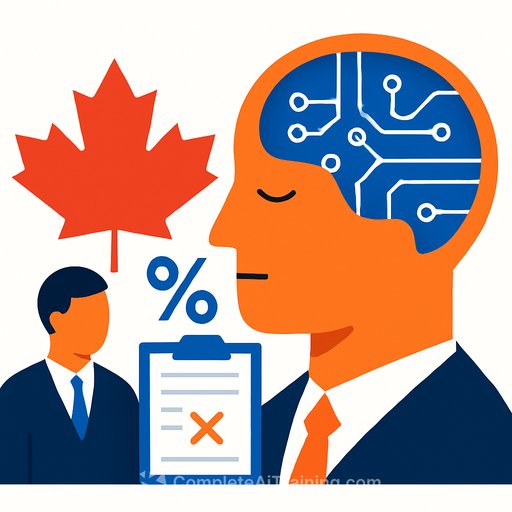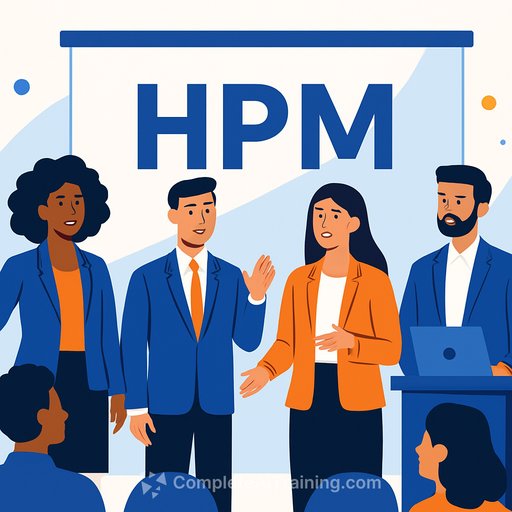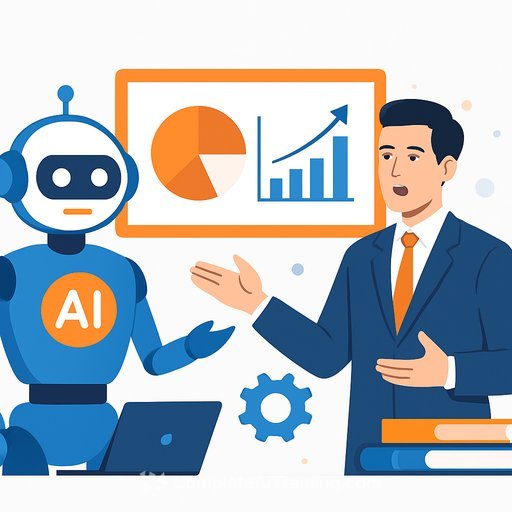AI, layoffs, and Canada's SME reality: HR's job is to protect experience and plan the transition
Senator Bernie Sanders' staff report warns AI and automation could put up to 100 million jobs at risk in the U.S. over the next decade. Will Canada see the same? Piers Steel, professor of human resources at the University of Calgary, says we can't count on a slower adoption curve anymore: "They're putting literally trillions of dollars into this." The money is real, and a wait-and-see stance is no longer a strategy.
Canada isn't the U.S.-but impact will hit unevenly
Amazon and Walmart cut tens of thousands of roles while profits climbed, and Sanders' report suggests more of that ahead in the U.S. Canada's structure is different. As Simon Blanchette at McGill notes, we're an SME backbone economy, not a corporate-heavy split. Expect a slower, but uneven restructuring: some jobs will be reshaped deeply; others will barely move, based on task-level exposure to AI.
The takeaway for HR: plan for variability at the task level inside each role, not blanket assumptions by job title. The exposure map inside a single department can look wildly different even among similar roles.
The risk no one budgets for: experience is vanishing
As entry-level work gets automated, the pipeline that creates future experts shrinks. Steel's warning is blunt: "What is our career path for getting people up to this level of skills, where they can start to vet AI? … That is a disappearing resource that you're not replacing." If you don't preserve and grow experience, oversight fades and errors slip through. Skills that don't get used, atrophy.
Automation ≠ layoffs: design for augmentation first
Sanders' report cites analyses showing AI could replace 60-70% of tasks in many jobs. Tasks, not whole jobs. That distinction is your leverage. Blanchette advises a granular approach: map exposure and decide where AI complements people-and where full replacement is actually justified.
Practical playbook: map tasks and redesign work
- Inventory tasks for each role (20-40 per role is common). Label by frequency, time spent, and risk if wrong.
- Classify exposure: automate, augment, or human-only. Tie each to a quality bar and reviewer.
- Redesign workflows: who prompts, who reviews, what gets logged, and what triggers escalation.
- Select 2-3 pilot roles for quick wins. Define KPIs before you start (time saved, error rate, rework).
- Codify career paths: which entry tasks remain, what replaces them, and how people climb to "AI reviewer."
Upskilling beats recruiting (because you can't hire your way out)
Blanchette is clear: many Canadian firms won't be able to recruit their way out of shortages. Build skills internally and protect institutional knowledge. Start with AI literacy for all, role-specific depth for doers, and advanced "AI supervision" for managers.
- Core skills: prompting, verification techniques, privacy basics, and citing sources.
- Role depth: data handling for analysts, process automation for ops, content QA for marketing, etc.
- Manager track: setting quality bars, spotting model failure modes, and coaching "AI-on-the-job."
- Create practice sandboxes with real datasets and safe guardrails.
- Recognize skill growth in performance reviews and internal mobility moves.
If you need structured paths by role, see curated options by job function here: Complete AI Training: Courses by job.
Make training and supervision a performance standard
AI use can't sit outside your performance system. Fold it in. Are people using AI correctly, vetting outputs, and documenting checks? Steel notes this oversight is now a "large thing"-treat it like any mission-critical tool.
- Update job descriptions: "AI-augmented" responsibilities and reviewer expectations.
- Set SOPs: approved tools, data boundaries, prompt templates, and review steps.
- Add audit trails: what was generated, by which tool, reviewed by whom, and final decision.
- Assign an AI quality lead per team for spot checks and coaching.
Guardrails: risk, privacy, and vendor control
- Human-in-the-loop for high-risk outputs (finance, legal, healthcare, safety).
- Privacy rules: never paste sensitive data into public tools; use enterprise instances where possible.
- Vendor policy: approval list, data-retention terms, and exit plan before deployment.
- Incident process: report, root-cause, remediate, and share learnings across teams.
Metrics that actually matter
- Quality: error rate vs. baseline, rework percentage, customer/partner escalations.
- Throughput: cycle time per standard task, backlog days.
- Adoption: percent of tasks using AI with documented review.
- Capability: skill assessment pass rates, time-to-competence for new hires.
- Retention: internal moves into AI-augmented roles, expert churn.
90-day HR action plan
- Days 0-30: Stand up a cross-functional AI working group. Pick two pilot roles. Draft SOPs and a basic review checklist. Baseline your metrics.
- Days 31-60: Launch training (foundational + role tracks). Start pilots with weekly retros. Document prompts and workflows that hit the quality bar.
- Days 61-90: Scale what works to adjacent teams. Formalize performance criteria for AI use. Publish a skills ladder that includes "AI reviewer" as a milestone.
Why this matters now
Even if job loss in Canada doesn't mirror the U.S., the shift in tasks is already here. If you don't plan the transition, the market will do it for you-with lost expertise as the price. Keep your experts, grow new ones, and make AI work prove its value under human supervision.
Sources and further reading
Your membership also unlocks:






